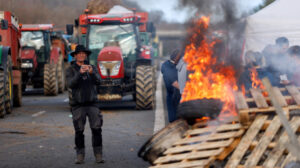Each year the planet generates some 50 million tons of electronic waste, ranging from batteries to mobile phones to light-up children’s toys. And although such devices may have been discarded, they’re not without value— the United Nations recently estimated the total worth of all that e-waste at $55 billion, thanks largely to the trace amounts of gold, silver, and other metals they contain. The problem, though, is getting them out.
German photographer Kai Löffelbein spent seven years documenting how those metals are extracted, often under dangerous conditions, by some of the world’s poorest people. His forthcoming book, CTRL-X: A Topography of E-Waste, contains photographs he took in Ghana, China, and India, where much of the world’s e-waste ends up. (This despite the 1989 Basel Convention, an international treaty intended to reduce the transfer of e-waste from developed countries to developing ones).
1000 years of English literature to be scrapped as British university “decolonises” curriculum
Greece becomes “most important hub for alternative gas” in Southeast Europe
“As a photographer, you’re surrounded by so much stuff,” Löffelbein says. “I own several computers, a laptop, many cameras. I started to ask myself where all that stuff would end up”.
To answer that question, Löffelbein first traveled to Accra, the capital of Ghana and home to Agbogbloshie, the world’s largest e-dump, where about 700 people—including children as young as 12—make a living by scavenging for electronics. “It was described to me as the gates of hell,” the photographer recalls. “And that’s what it was.” He found some of the youngest children tossing copper cables into fires to burn off their rubber coating, sending plumes of noxious black smoke into the already polluted air.
Read more: Wired
Ask me anything
Explore related questions





